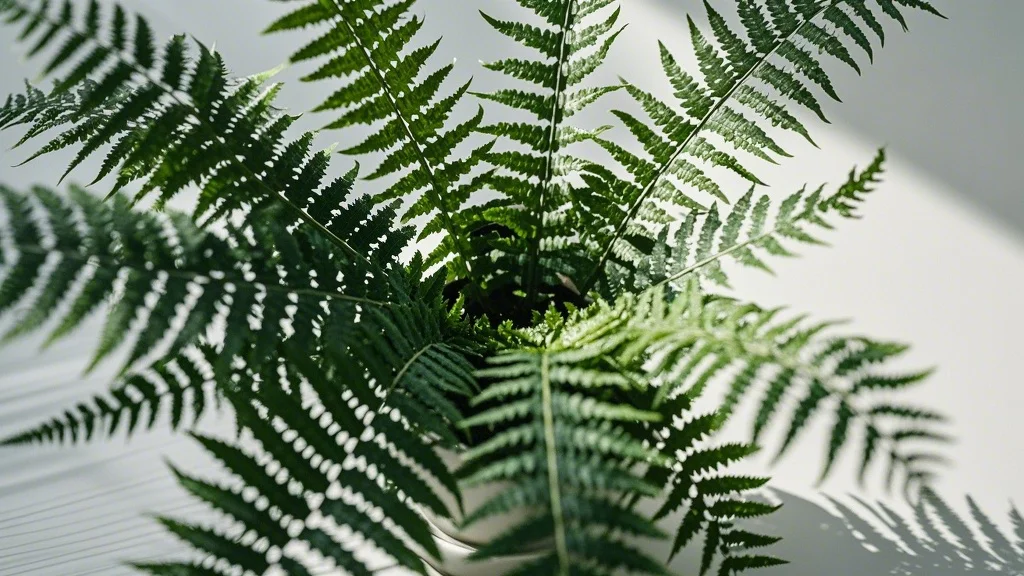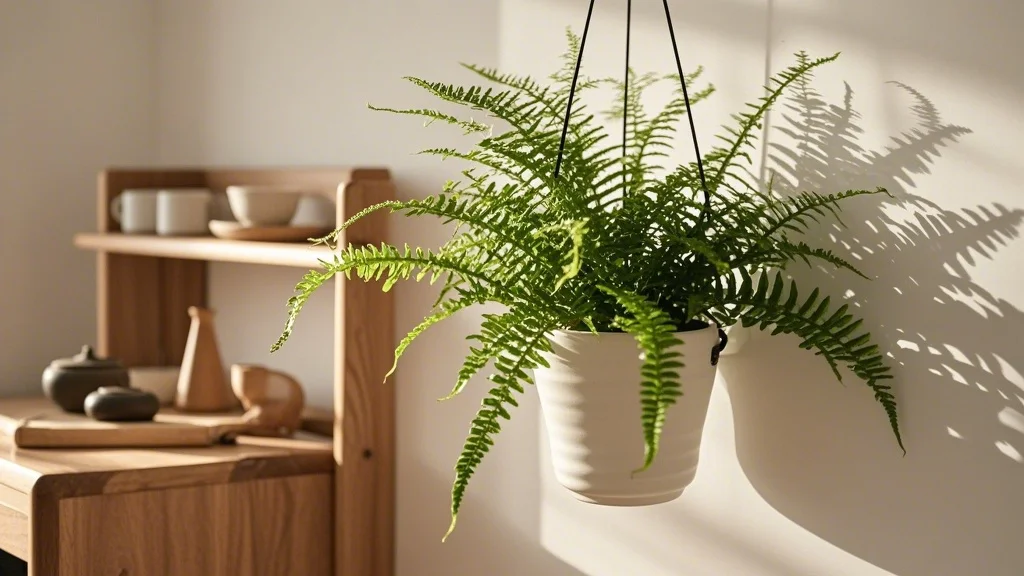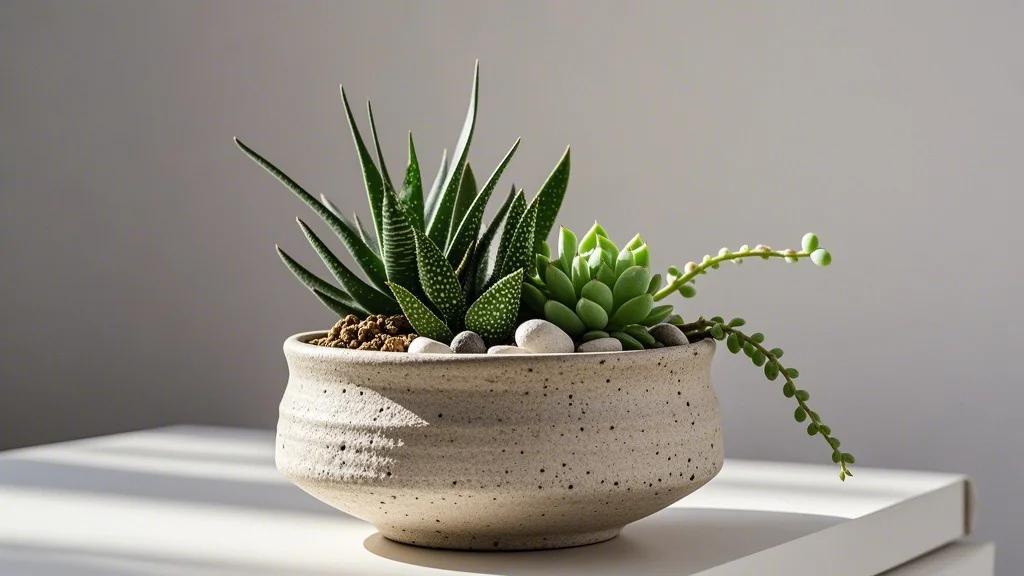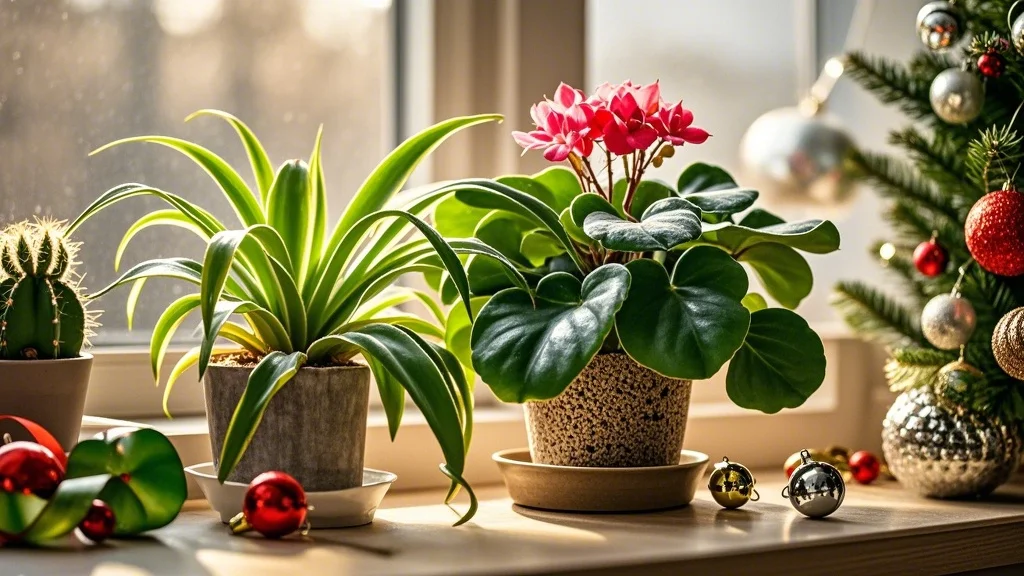For pet owners who love to bring a touch of nature indoors, finding the perfect houseplant can be a challenge. Many popular indoor plants are toxic to cats and dogs, leaving animal lovers in a quandary. Enter the Boston fern (Nephrolepis exaltata), a lush, pet-safe option that adds a classic touch of greenery to any home. This comprehensive guide will explore why Boston ferns are an excellent choice for pet owners and how to care for these humidity-loving beauties.
Contents
Why Choose a Boston Fern?

Pet-Safe and Non-Toxic
The Boston fern is one of the few houseplants that are completely non-toxic to both cats and dogs. This makes it an ideal choice for pet owners who want to enjoy the benefits of indoor plants without worrying about their furry friends’ safety. Even if your curious cat or playful pup decides to nibble on the fronds, they won’t experience any adverse effects.
Air-Purifying Properties
Beyond their pet-friendly nature, Boston ferns are excellent air purifiers. They help remove indoor air pollutants, including formaldehyde and xylene, which are common in household products. This air-cleaning ability contributes to a healthier environment for both you and your pets.
Lush, Tropical Aesthetic
With their cascading fronds and rich green color, Boston ferns bring a touch of tropical elegance to any space. Their full, bushy appearance makes them perfect for hanging baskets or as statement pieces on plant stands, adding texture and life to your home decor.
Boston Fern Care Guide
Light Requirements
Boston ferns thrive in bright, indirect light. While they can tolerate some direct morning sun, they prefer filtered light or shade for most of the day. In their natural habitat, these ferns grow under the canopy of larger trees, so mimicking these conditions in your home will help your fern flourish.
- Ideal location: Near a north or east-facing window
- Avoid: Direct afternoon sun, which can scorch the delicate fronds
Humidity Needs
One of the most crucial aspects of Boston fern care is maintaining high humidity levels. These moisture-loving plants are native to tropical and subtropical regions, where humidity is naturally high.
- Optimal humidity: 50-80%
- Methods to increase humidity:
- Use a humidifier near the plant
- Place the pot on a pebble tray filled with water
- Mist the fronds regularly, especially in dry climates or during winter
Watering
Consistent moisture is key for Boston ferns, but they don’t like to sit in waterlogged soil. Finding the right balance is essential for the health of your plant.
- Watering frequency: Keep the soil consistently moist but not soggy
- Signs of underwatering: Drooping or yellowing fronds
- Signs of overwatering: Brown, mushy stems at the base of the plant
Tip: Always use room temperature water to avoid shocking the plant’s roots.
Soil and Fertilizer
Boston ferns prefer a rich, well-draining potting mix that retains moisture without becoming waterlogged.
- Ideal soil mix: Equal parts peat moss, loam, and sand
- Fertilizer: Feed monthly during the growing season (spring and summer) with a balanced, water-soluble fertilizer diluted to half strength
Temperature
These ferns are comfortable in the same temperature range that most humans prefer, making them easy to accommodate in most homes.
- Ideal temperature range: 60-75°F (15-24°C)
- Avoid: Cold drafts and sudden temperature fluctuations
Pruning and Maintenance
Regular pruning helps maintain the fern’s shape and encourages healthy growth.
- Remove any brown or yellowing fronds at the base
- Trim back overgrown areas to maintain the desired shape
- Divide large plants every few years to rejuvenate growth and create new plants
Common Boston Fern Varieties
While the classic Boston fern is widely popular, there are several interesting varieties to consider:
- Fluffy Ruffle Fern (Nephrolepis exaltata ‘Fluffy Ruffles’): Features more compact growth with ruffled fronds.
- Rita’s Gold (Nephrolepis exaltata ‘Rita’s Gold’): Offers bright, golden-green fronds for a unique color variation.
- Roosevelti (Nephrolepis exaltata ‘Roosevelti’): Known for its wider, more arching fronds.
- Tiger Fern (Nephrolepis exaltata ‘Tiger’): Displays distinctive horizontal stripes on its fronds.
Troubleshooting Common Issues
Even with proper care, Boston ferns can sometimes encounter problems. Here are some common issues and how to address them:
Yellowing Fronds
- Cause: Often due to overwatering or poor drainage
- Solution: Adjust watering schedule and ensure proper drainage
Brown, Crispy Fronds
- Cause: Low humidity or underwatering
- Solution: Increase humidity levels and maintain consistent moisture
Pale, Bleached Appearance
- Cause: Too much direct sunlight
- Solution: Move the plant to a location with more filtered light
Slow Growth or Lack of New Fronds
- Cause: Insufficient light or nutrients
- Solution: Ensure the plant receives adequate indirect light and fertilize regularly during the growing season
Boston Ferns and Pet Interaction
While Boston ferns are non-toxic to pets, it’s still important to monitor interactions between your plants and animals.
- Discourage pets from playing with or chewing on the fern to prevent damage to the plant
- Place the fern in a location where pets can’t easily access it, such as a hanging basket or high shelf
- If your pet shows excessive interest in the plant, consider using a pet deterrent spray on the pot or nearby surfaces
Decorating with Boston Ferns

Boston ferns are versatile plants that can enhance various home decor styles:
- Hang them in macramé plant hangers for a boho-chic look
- Place them on plant stands or pedestals for a classic, elegant appearance
- Use them as natural room dividers or privacy screens
- Incorporate them into a lush, tropical-themed bathroom to take advantage of the naturally higher humidity
Conclusion
Boston ferns offer the perfect solution for pet owners seeking to add lush, green life to their homes without compromising their furry friends’ safety. With their air-purifying qualities, stunning appearance, and pet-safe nature, these classic houseplants bring numerous benefits to any indoor space. While they do require specific care, particularly in terms of humidity and watering, the effort is well worth it for the beauty and tranquility they bring to your home. By following this comprehensive care guide, you’ll be well-equipped to grow a thriving Boston fern that both you and your pets can enjoy for years to come.









